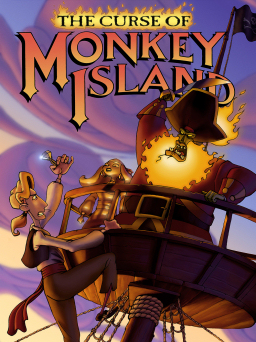
The Curse of Monkey Island is an adventure game developed and published by LucasArts in 1997. A sequel to 1991's Monkey Island 2: LeChuck's Revenge, it is the third game in the Monkey Island series.

The Infinity Gems are six fictional gems appearing in American comic books published by Marvel Comics, named after and embodying various aspects of existence. The gems can grant whoever wields them various powers in accordance to the aspect of existence they represent, and have the potential of turning the wielder into a god-like being when the main six are held together. Thus, they are among the most powerful and sought-after items in the Marvel Universe; playing important roles in several storylines, in which they were wielded by characters such as Thanos and Adam Warlock. Some of these stories depict additional Infinity Gems or similar objects. Although, the Infinity Gems altogether give its user nigh-omnipotence, the Gems only function on the universe they belong to and not on alternate realities.
"Family Matters", more commonly called "The Bloody Baron", is a quest in The Witcher 3: Wild Hunt. It was designed by Paweł Sasko and written by Karolina Stachyra. The quest follows Geralt, the protagonist of the series, as he helps the eponymous Baron find his family in the war-torn region of Velen.
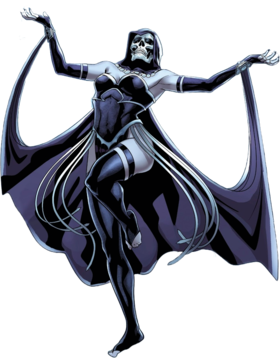
Death is a character appearing in American comic books published by Marvel Comics. Created by Mike Friedrich and Jim Starlin, the character first appeared in Captain Marvel #26. Death is a cosmic entity based on the personification of death. The character has also been known as Lady Death and Mistress Death at various points in her history.
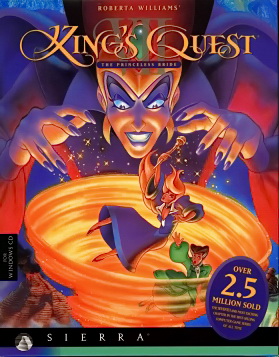
King's Quest VII: The Princeless Bride is a graphic adventure game developed and published by Sierra On-Line for the MS-DOS, Microsoft Windows and Macintosh computers in 1994. It features high-resolution graphics in a style reminiscent of Disney animated films and is the only King's Quest game with multiple protagonists: Queen Valanice and Princess Rosella, who are both spirited away to the realm of Eldritch, and Rosella is transformed into a troll. They must find a way to return Rosella to normal and find her true love, get rid of a powerful evil force threatening this realm, and get back to their kingdom Daventry.

The Gorgon is a 1964 British horror film directed by Terence Fisher and starring Christopher Lee, Peter Cushing, Richard Pasco and Barbara Shelley. The screenplay was by John Gilling and Anthony Nelson Keys. It was produced by Keys for Hammer Films.

Secret of the Silver Blades is the third in a four-part series of Forgotten Realms Dungeons & Dragons "Gold Box" adventure role-playing video games. The game was released in 1990.

The Simoqin Prophecies is a fantasy novel in English written by Indian author Samit Basu, and is the first novel in the GameWorld trilogy. It has also been published in Swedish, German and Spanish.

The Valley of the Lost is the seventh book in the Deltora Quest novel series written by Emily Rodda. The final gem from the Belt of Deltora is in the mysterious Valley of the Lost with its guardian only known as the Guardian. To retrieve the gem, Lief, Barda, and Jasmine must play his game. If they win, they get the gem. If they lose they will stay trapped inside the Valley of the Lost forever.

Universe is a graphic adventure game developed and published by Core Design for the Amiga, Amiga CD32 and DOS platforms in 1994. It was Core Design's second and last effort in the adventure game genre after Curse of Enchantia, of which it was originally planned to be a sequel.

Deltora Quest is a Japanese anime television series based on the series of children's books of the same name, written by Australian author Emily Rodda. It was announced by Rodda herself at Sydney's Book Council of Australia Conference and at an ABC Kids convention. The series was produced by Genco and SKY Perfect Well Think. It was broadcast for 65 episodes on TV Aichi from January 2007 to March 2008. It began airing on Cartoon Network Australia and New Zealand in May 2010. It premiered in the United States on The Hub on October 10, 2010.
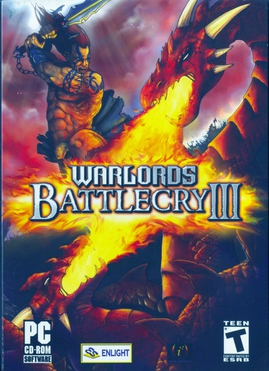
Warlords Battlecry III is a real-time strategy game developed by Infinite Interactive and published in 2004. It is the third installment in the Warlords Battlecry series and the sequel to Warlords Battlecry II.

The three Gorgon sisters-Stheno, Euryale, and Medusa-are mythological monsters who have been featured in art and culture spanning from the days of ancient Greece to present day. Medusa is the most well-known Gorgon, having been variously portrayed as a monster, a protective symbol, a rallying symbol for liberty, and a sympathetic victim of rape and/or a curse.

Dark Earth is a post-apocalyptic adventure game with action elements, developed by Kalisto Entertainment and published by MicroProse for Microsoft Windows in 1997. Reviewers were generally positive, with critics commenting on the well thought-out story, milieu, and the impressive visuals, though the combat was criticized. It sold 500,000 copies by 1999.
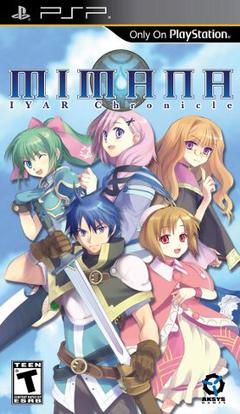
Mimana Iyar Chronicle is a role-playing video game developed by Kogado Studio and Premium Agency. It was published in Japan by GungHo Works on February 26, 2009, and in North America by Aksys Games on March 30, 2010, for the PlayStation Portable.

Artix Entertainment, LLC is an independent video game developer and publisher founded by Adam Bohn in October 2002. It is best known for creating browser-based role-playing video games—including AdventureQuest, DragonFable, MechQuest, and AdventureQuest Worlds—using Adobe Flash. The company released its first title for iOS and Android devices in March 2011 and on October 19, 2016, released its first 3D game, AdventureQuest 3D, with the Unity game engine.

Age of the Dragons is a 2011 fantasy film directed by Ryan Little and starring Danny Glover and Vinnie Jones. A fantasy-themed reimagining of Herman Melville's classic 1851 novel, Moby Dick, it was released in the United Kingdom on March 4, 2011.

The Legend of Kyrandia: Book One is a 2D point-and-click adventure game, developed by Westwood Studios and published by Virgin Games in August 1992. The game is the first in the Legend of Kyrandia series, and focuses on players taking on the role of a young prince who must put an end to the tyrannical chaos of an evil court jester.

















